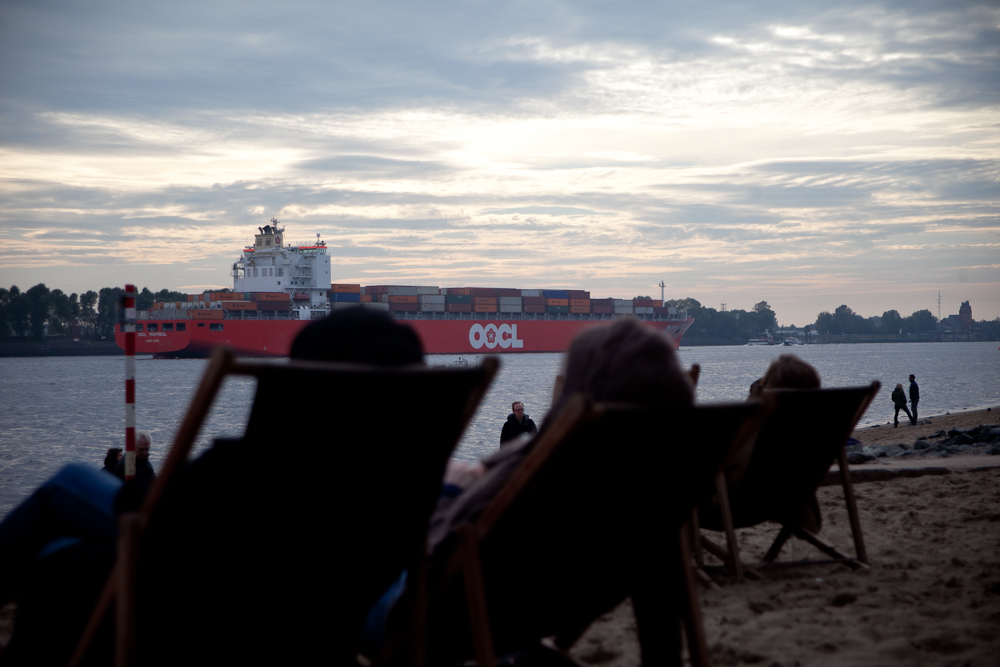The Green and the Grey

Travelling from one appointment to another I see green and grey, green and grey, green and grey as the train clatters along, slowing for stations and then accelerating away to shuttle people around the city, an endless loop. Looking throughout I can see gardens, trees, overgrown verges and balconies spilling over with potted flowers. And everywhere water; whether lakes, canals or the insistent raindrops that stripe the windows as we keep moving forward to the next station, and the next.
The city and its districts shouldn’t be explored by car, not really, so much is missed. With the train I can see the backs of houses, the hidden spaces, like photographs of the life behind the house fronts and office buildings. The old VW Beetle perched on a rooftop, just past Saarlandstraße. The turn out of the tunnel and the sudden hugeness of the Elbe and the port at Landungsbrücken. This is Hamburg, and it’s been the city in which I live for six years now, and it’s seeping into my bones.

And here Hamburg is a world away from my hometown. A few months after I arrived here, a newly-met friend half-joked that, when getting to know the Hansastadt and its people, “the first ten years are the toughest”. With a population of 1.8 million, Dublin matches Hamburg in size, but it feels like a village. People talk. Within ten minutes of being somewhere, of meeting someone, you’ve been slotted into the framework as “the brother of the friend of that girl who used to sit next to my mother in the library on Thursday afternoons twelve years ago”. Nothing is forgotten, and no-one’s anonymous. And it’s a warm and friendly feeling, being connected, but claustrophobic, without space to breathe. If you don’t want to be sociable, then don’t go outside your home.
Hamburg is a more private place, I feel anonymous. It can be lonely, but it’s a blessing sometimes that people keep their distance; a shake of the hand, a quick nod of the head before going about their business. “Reserved” it’s always the word I come back to. Never a voice raised. No forcing of conversation onto others. And if you ever want to see through the cracks to the people behind, just hold a door for someone, commit a minor act of kindness, and the smile will come, and the thanks will come, and it’ll warm you all the more by not being only an act of good manners, it’s heartfelt and truly meant. In Dublin, everyone is your closest, dearest friend, but it doesn’t mean they like you. In Hamburg friendship is hard-bought with time and persistence, but it’s genuine, and it lasts.
I’ve been living here for six years, mostly good, sometimes bad. A normal life. I work, I meet people, I travel around the city from one quarter to another. I carve out a place for myself. I can’t fool myself into believing that I’m German, I’m an Irishman living in my Germany, cycling between being proud of my heritage and my nationality and feeling the sometimes-lonely awareness one gets from being an outsider looking in. I’m not in my own country. But Hamburg’s becoming my city, it’s becoming my home.
– John Conniffe